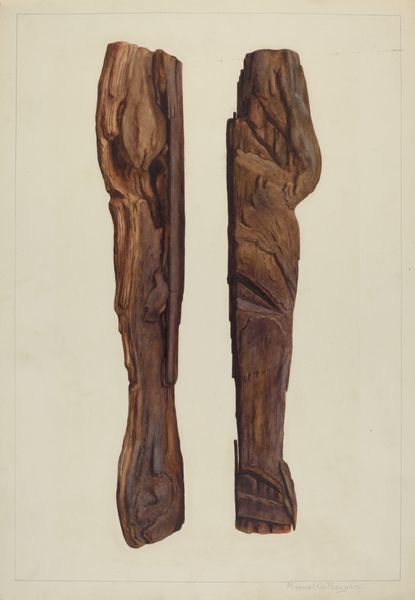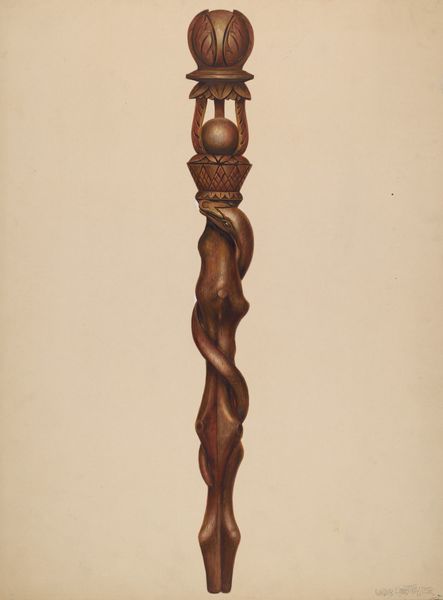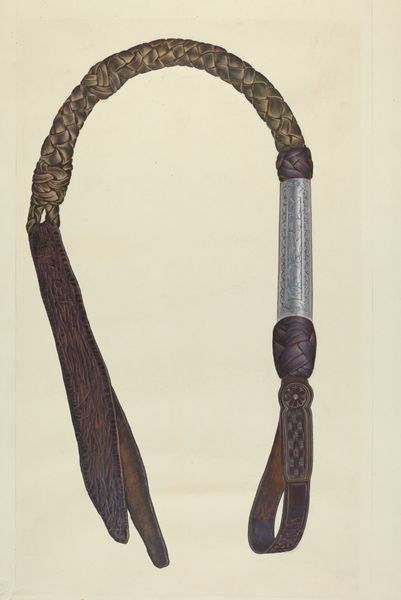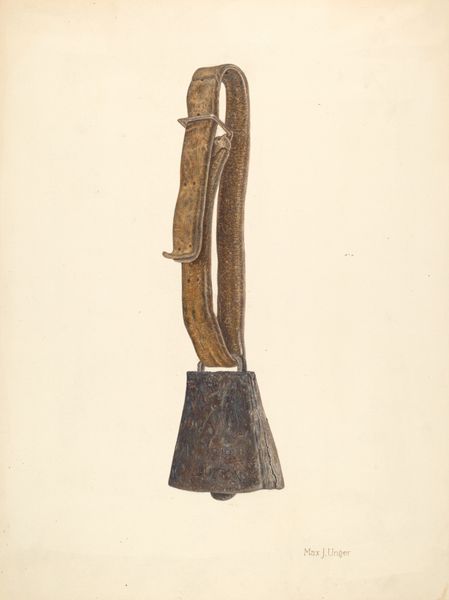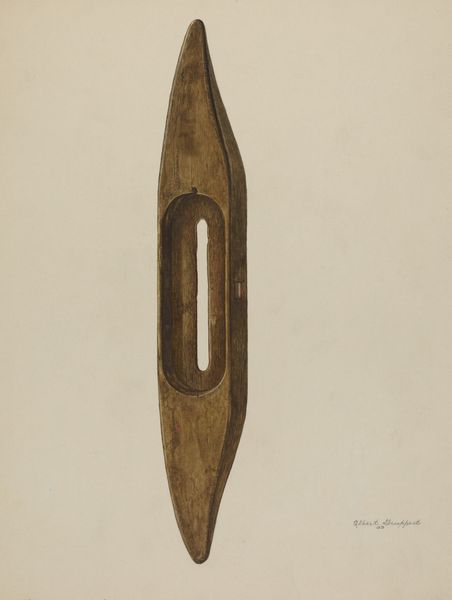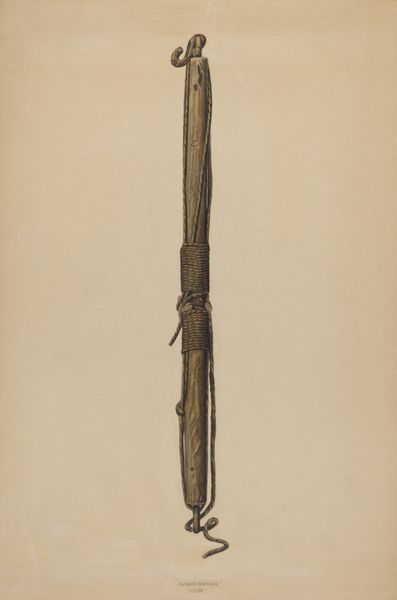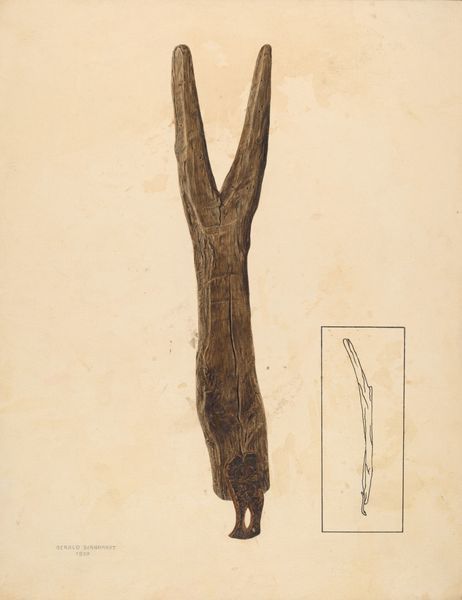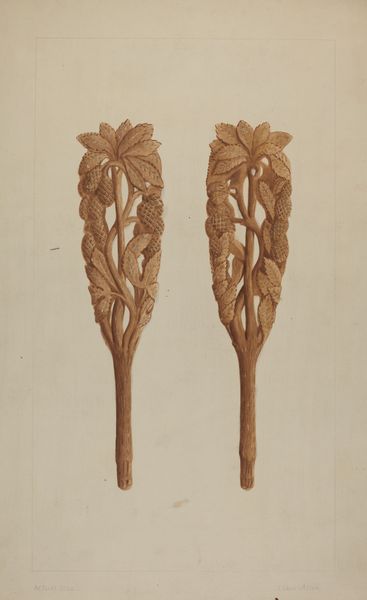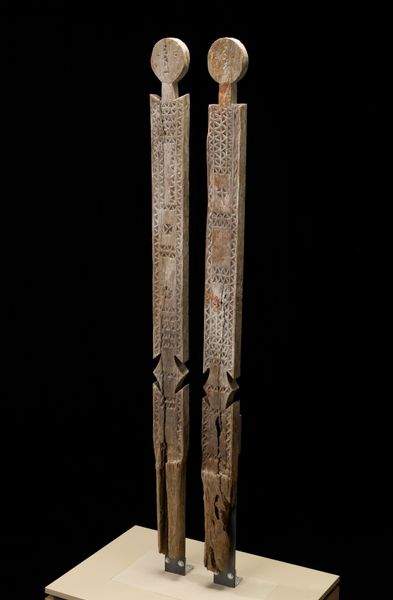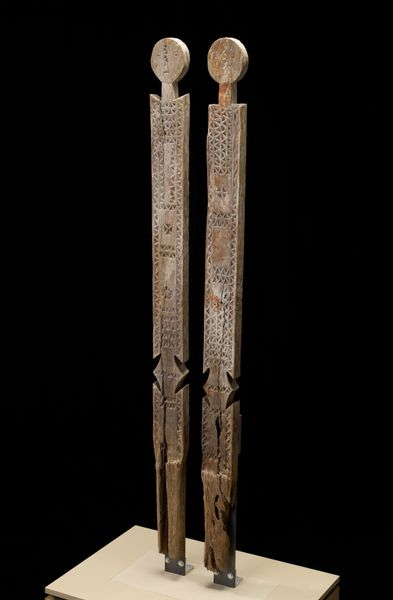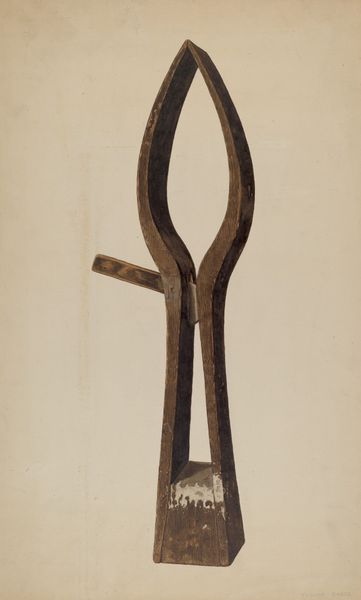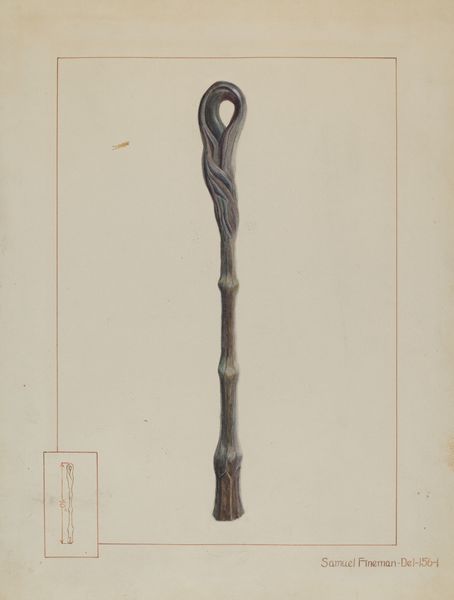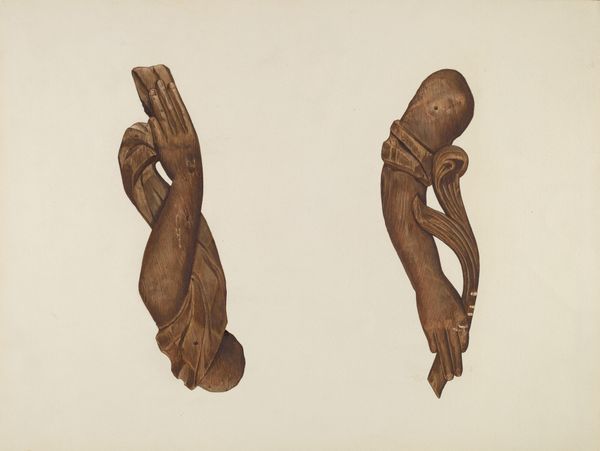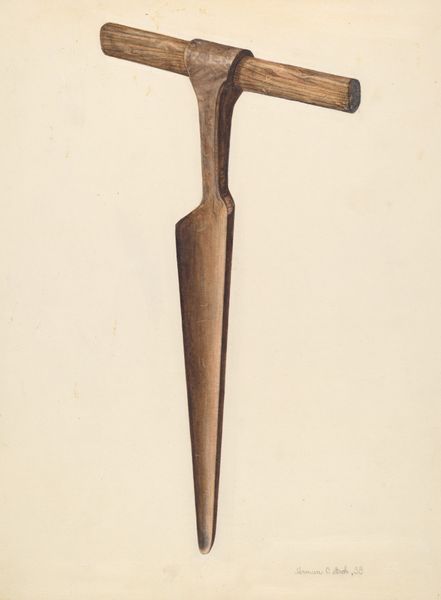
drawing, carving, watercolor, wood
#
drawing
#
carving
#
charcoal drawing
#
figuration
#
form
#
watercolor
#
line
#
wood
#
watercolour illustration
Dimensions: overall: 28.5 x 51 cm (11 1/4 x 20 1/16 in.) Original IAD Object: 33" long; 1 1/2" in diameter
Copyright: National Gallery of Art: CC0 1.0
Curator: Here, we're presented with "Walking Stick," a piece dated circa 1937 by Frank Gray. The work seems to combine drawing with carving—the artist used watercolor and charcoal on, presumably, wood. The result is quite striking in its delicate rendition of this naturally occurring object. Editor: My first thought? It's like glimpsing the spirit of the tree, still reaching even after being cut and carved. It’s a hauntingly quiet piece. A ghost of a stick rendered in sepia. Curator: Right, I agree, the figuration is undeniably present and calls into consideration not only the tree from which it was cut, but the act and form of its usage. If the image serves to reflect Frank Gray's interest in documenting Native material culture as an act of self determination, it raises interesting questions. Editor: Determination? I feel more like a meditation, almost a prayer. You see how the artist has taken these raw pieces of wood and made them speak? Each groove feels like a whispered secret, a lineage carved into the very being of the stick. Is this just utilitarian or a representation? Curator: Certainly, Gray's intention is up for debate. He may well be touching upon ideas around form and symbolism within the medium. It reminds us of the historical context in which this work was created and reminds me to investigate its placement in dialogues regarding identity. The period reflects heightened interest in regional identity and, like photography, watercolor offered Gray another way of representation. Editor: Okay, you make me think beyond the artistic beauty of it, which is considerable. There is something incredibly personal about it too, perhaps the urge to take a piece of nature, literally, and reshape it into something carrying one’s own mark? Curator: Perhaps we're seeing a statement about the ongoing dialogue between nature and human intervention. Where the artist isn’t so much interested in appropriation as participation. It’s in the line, in the carving… Editor: It really lingers with you, this image. A memory made tangible.
Comments
No comments
Be the first to comment and join the conversation on the ultimate creative platform.
